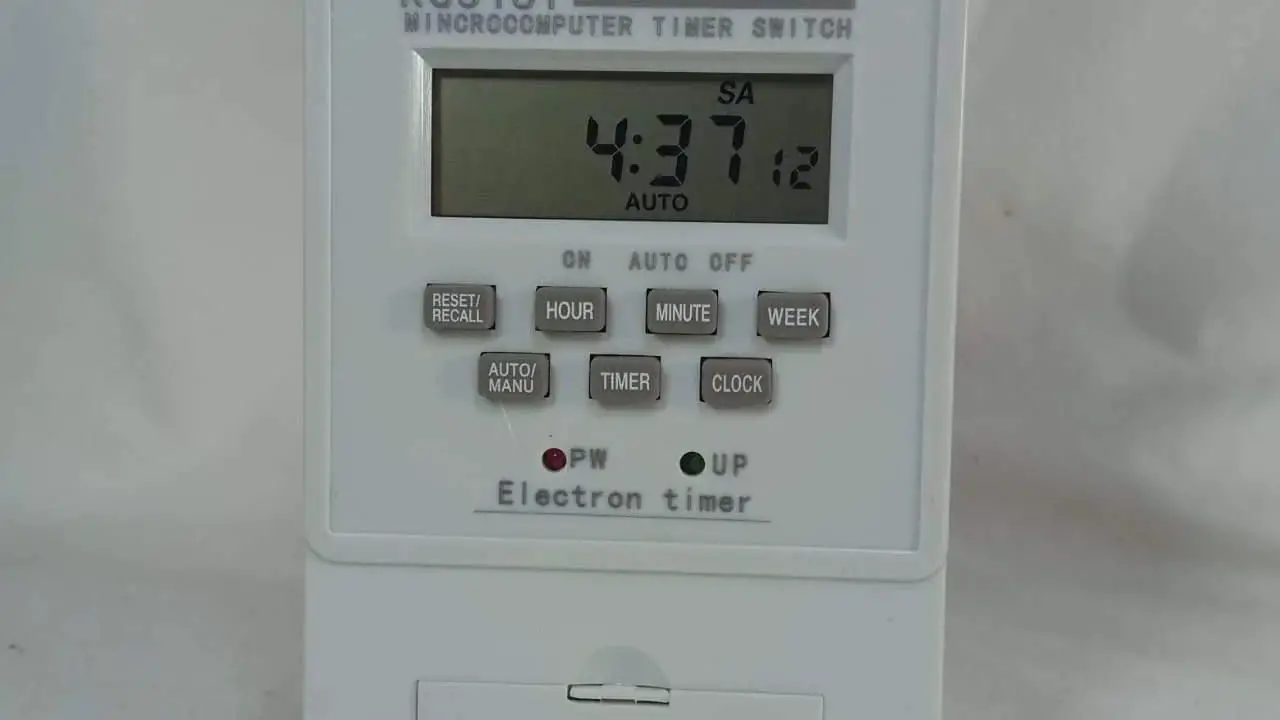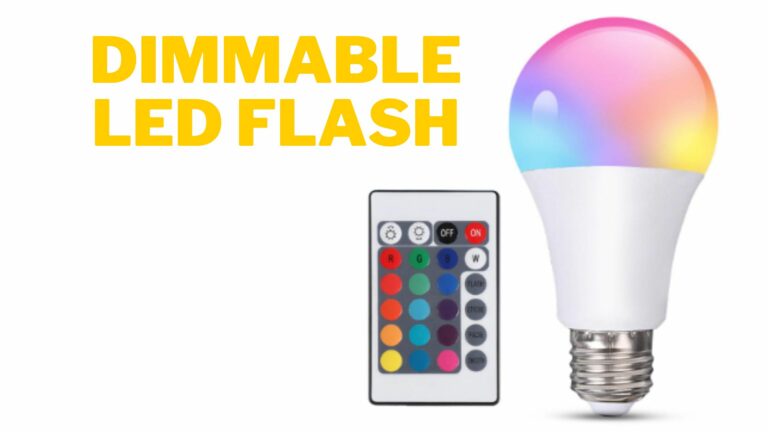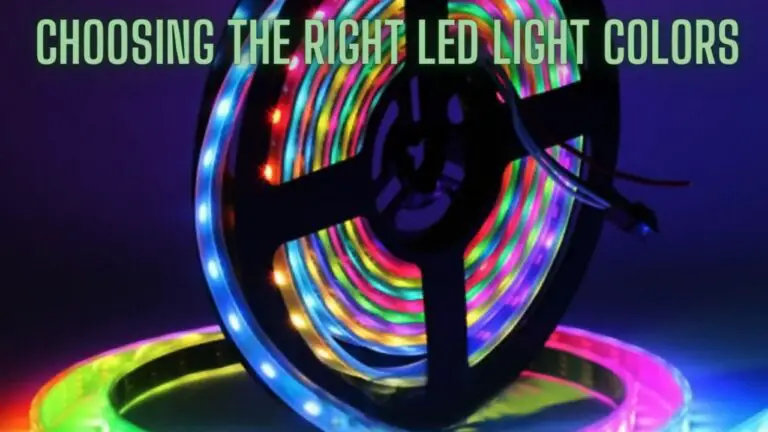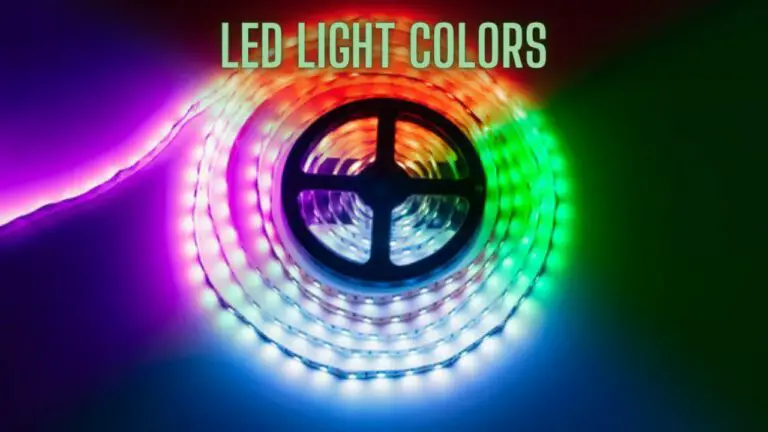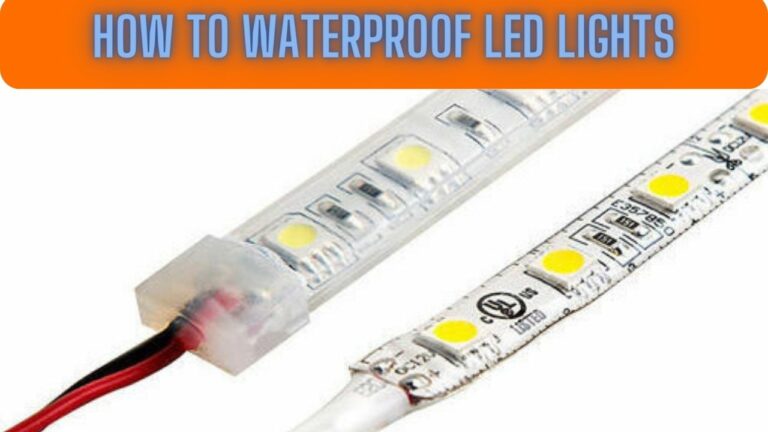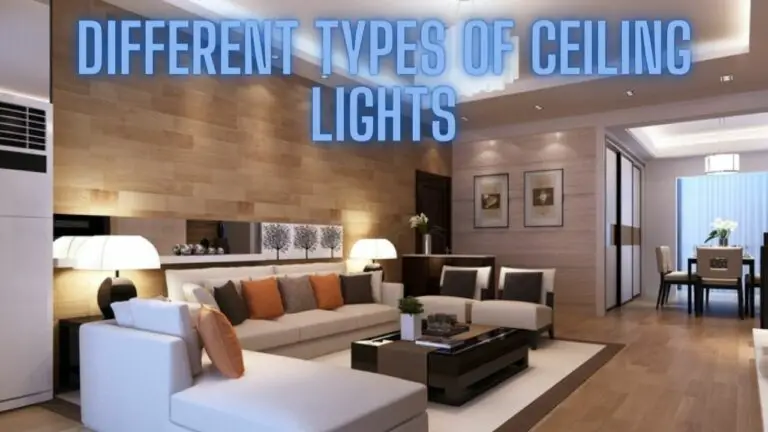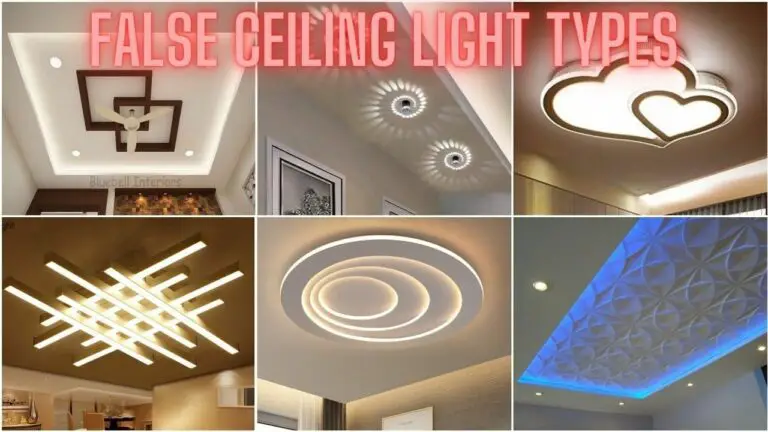Different Types of Light Switches: A Guide to Illuminating Your Space
Introduction
Light switches are fundamental components of electrical systems in both residential and commercial buildings, allowing users to control the illumination of their spaces with ease. They play a pivotal role in modern living, providing convenience, comfort, and safety by enabling users to turn lights on or off as needed.
Throughout history, light switches have evolved from simple mechanical devices to sophisticated electrical controls with advanced features and functionalities. Today, there are various types of light switches available, each designed to meet specific needs and preferences.
In this guide, we’ll explore the different types of light switches commonly used in homes, offices, and other environments. From traditional toggle switches to modern smart switches, we’ll delve into the functionalities, applications, and advantages of each switch type. Additionally, we’ll discuss installation considerations, wiring diagrams, and maintenance tips to help you make informed decisions when selecting and installing light switches.
Whether you’re renovating your home, upgrading your lighting system, or designing a new commercial space, understanding the different types of light switches is essential for creating a comfortable, efficient, and visually appealing environment. So let’s embark on this journey to discover the world of light switches and illuminate your spaces with style and functionality.
Toggle Switches
Toggle switches are one of the most common and recognizable types of light switches, characterized by their simple yet effective design. They consist of a lever or handle that can be flipped up or down to turn the connected light or device on or off. Toggle switches are available in various configurations, including single-pole, double-pole, and three-way, allowing them to control single or multiple lights from one or more locations.
Key Features:
- Mechanical Operation: Toggle switches operate mechanically, with a lever or handle that moves between two positions to open or close the electrical circuit.
- Simple Design: Their straightforward design makes toggle switches easy to use and understand, making them suitable for a wide range of applications.
- Durability: Toggle switches are known for their durability and reliability, with sturdy construction that can withstand frequent use and environmental conditions.
- Versatility: They are available in various sizes, styles, and configurations to accommodate different installation requirements and aesthetic preferences.
Applications:
- Residential Lighting: Toggle switches are commonly used in homes to control overhead lights, ceiling fans, and other fixtures.
- Commercial Buildings: They are also found in offices, schools, and commercial spaces to control lighting in rooms, hallways, and common areas.
- Industrial Settings: In industrial environments, toggle switches may be used to control machinery, equipment, and heavy-duty lighting systems.
Advantages:
- Ease of Use: Toggle switches are intuitive to operate, making them suitable for users of all ages and abilities.
- Reliability: Their robust construction and simple mechanism ensure long-term reliability and trouble-free operation.
- Cost-Effectiveness: Toggle switches are often more affordable than other types of switches, making them a cost-effective choice for large-scale installations.
Disadvantages:
- Limited Functionality: Toggle switches typically offer basic on/off control and may not have advanced features found in other types of switches, such as dimming or remote control capabilities.
- Aesthetic Considerations: While functional, some may consider toggle switches to be less visually appealing than more modern switch designs.
Despite their simplicity, toggle switches remain a popular choice for many applications due to their reliability, durability, and ease of use. Whether in residential, commercial, or industrial settings, toggle switches continue to provide convenient control over lighting and electrical devices with timeless appeal.
Rocker Switches
Rocker switches offer a modern alternative to traditional toggle switches, featuring a flat, rectangular button that rocks back and forth to control the connected light or device. They are known for their sleek and contemporary design, which blends seamlessly with modern interiors. Rocker switches come in various configurations and styles, offering versatility and functionality for different applications.
Key Features:
- Flat Design: Rocker switches have a flat, low-profile design that protrudes less from the wall compared to toggle switches, giving them a sleek and modern appearance.
- Smooth Operation: Their rocking motion provides smooth and effortless operation, allowing users to easily turn lights on or off with a gentle push or pull.
- Visible Status: Some rocker switches feature illuminated indicators or LED lights to indicate the switch’s status (on or off), enhancing visibility in dimly lit environments.
- Configurations: Rocker switches are available in single-pole, double-pole, and three-way configurations, providing flexibility for controlling single or multiple lights from one or more locations.
Applications:
- Residential Lighting: Rocker switches are commonly used in modern homes, apartments, and condominiums to control lighting in living rooms, bedrooms, kitchens, and bathrooms.
- Commercial Buildings: They are also popular in commercial and retail spaces, providing stylish and functional control over lighting in offices, restaurants, hotels, and retail stores.
- Automotive and Marine: Rocker switches are widely used in automotive, marine, and recreational vehicles (RVs) to operate lights, accessories, and electronic devices.
Advantages:
- Modern Aesthetic: Rocker switches offer a contemporary look that complements modern interior designs, making them a popular choice for residential and commercial applications.
- Easy Operation: Their smooth, rocker-style action requires minimal effort to operate, providing convenient control for users of all ages.
- Customization Options: Rocker switches are available in various colors, finishes, and styles, allowing homeowners and designers to customize their appearance to match the décor and aesthetics of their spaces.
Disadvantages:
- Cost: Rocker switches may be more expensive than traditional toggle switches, especially for models with advanced features such as illuminated indicators or dimming capabilities.
- Limited Compatibility: While suitable for most applications, rocker switches may not be compatible with all electrical systems or configurations, requiring careful consideration during installation.
Despite their higher cost, rocker switches offer a stylish and user-friendly alternative to toggle switches, making them a popular choice for modern homes, offices, and commercial spaces. With their sleek design, smooth operation, and customizable options, rocker switches provide both form and function for controlling lighting and electrical devices with style.
Push Button Switches
Push button switches offer a convenient and versatile way to control lighting and electrical devices with a simple push or press of a button. They feature a button or plunger that, when depressed, completes the electrical circuit to turn the connected light or device on. Push button switches are available in various configurations and styles, offering flexibility and customization options for different applications.
Key Features:
- Momentary Operation: Push button switches typically operate in a momentary fashion, meaning they return to their original position when released. This allows for temporary activation of the connected device or light.
- Compact Design: Push button switches have a compact and space-saving design, making them suitable for applications where space is limited or aesthetics are important.
- Tactile Feedback: Many push button switches provide tactile feedback when pressed, giving users assurance that the switch has been activated. This feedback can be audible or tactile, depending on the design of the switch.
- Configurations: Push button switches come in various configurations, including single-pole, double-pole, and momentary or latching options, providing flexibility for different installation requirements.
Applications:
- Doorbell Systems: Push button switches are commonly used in doorbell systems, allowing visitors to announce their presence by pressing the doorbell button.
- Access Control: They are also found in access control systems, security panels, and intercom systems to control entry or activate alarms.
- Industrial Machinery: Push button switches are widely used in industrial machinery and equipment for start/stop functions, emergency shutdowns, and other control operations.
Advantages:
- Simple Operation: Push button switches offer straightforward operation, making them easy to use for users of all ages and abilities.
- Versatility: Their momentary operation makes push button switches suitable for applications requiring temporary activation, such as doorbells or alarms.
- Durability: Many push button switches are designed for rugged environments and are built to withstand frequent use and harsh conditions.
Disadvantages:
- Limited Functionality: Push button switches typically provide basic on/off control and may not offer advanced features such as dimming or remote control capabilities.
- Potential for Accidental Activation: The momentary nature of push button switches means they can be inadvertently activated by accidental bumps or pressure, leading to unintended operation.
Despite their simplicity, push button switches offer reliable and convenient control over lighting and electrical devices in a variety of applications. Whether used in residential, commercial, or industrial settings, push button switches provide a versatile and space-saving solution for activating and controlling electrical systems with ease.
Dimmer Switches
Dimmer switches offer a flexible and convenient way to control the brightness of lighting fixtures, allowing users to adjust the intensity of light to suit their preferences or specific lighting needs. They enable smooth and gradual dimming or brightening of lights, providing ambiance, energy savings, and extended lamp life. Dimmer switches are available in various types and styles, offering compatibility with different types of light bulbs and fixtures.
Key Features:
- Variable Brightness Control: Dimmer switches allow users to adjust the brightness of connected lights to any desired level, from full brightness to complete darkness, providing customizable lighting options for different activities and moods.
- Smooth Dimming Action: They offer smooth and gradual dimming or brightening of lights, ensuring seamless transitions between light levels without flickering or sudden changes in illumination.
- Compatibility: Dimmer switches are compatible with a wide range of light bulbs, including incandescent, halogen, CFL (compact fluorescent), and LED (light-emitting diode) bulbs, making them suitable for retrofit and new construction applications.
- Versatility: Dimmer switches come in various configurations, including single-pole, three-way, and multi-location options, providing flexibility for controlling lights from one or more locations.
Applications:
- Residential Lighting: Dimmer switches are commonly used in homes to control lighting in living rooms, dining rooms, bedrooms, and other areas where ambiance and mood lighting are desired.
- Hospitality and Entertainment: They are popular in hotels, restaurants, bars, and entertainment venues for creating different atmospheres and enhancing the guest experience.
- Commercial Spaces: Dimmer switches are also found in offices, conference rooms, retail stores, and art galleries for highlighting displays, artwork, and merchandise.
Advantages:
- Customizable Lighting: Dimmer switches allow users to tailor the brightness of lighting fixtures to their preferences, providing flexibility and control over the ambiance and mood of a space.
- Energy Savings: By reducing the brightness of lights when full illumination is not required, dimmer switches can help save energy and lower electricity bills.
- Extended Bulb Life: Dimming lights can extend the lifespan of light bulbs by reducing the intensity of light and minimizing heat generation, resulting in fewer bulb replacements and maintenance costs.
Disadvantages:
- Compatibility Issues: Some dimmer switches may not be compatible with certain types of light bulbs or fixtures, requiring careful selection to ensure proper functionality and performance.
- Cost: Dimmer switches are typically more expensive than standard on/off switches, especially for models with advanced features such as remote control or programmable settings.
Despite their higher cost, dimmer switches offer numerous benefits, including customizable lighting, energy savings, and extended bulb life. Whether used in residential, commercial, or hospitality settings, dimmer switches provide a versatile and efficient solution for creating the perfect lighting ambiance with ease.
Motion Sensor Switches
Motion sensor switches, also known as occupancy sensors or motion detectors, are innovative devices that automatically turn lights on or off based on detected motion within a defined area. They offer convenience, energy savings, and enhanced security by activating lighting only when needed and reducing energy consumption when spaces are unoccupied. Motion sensor switches are available in various types and configurations to suit different applications and installation requirements.
Key Features:
- Motion Detection: Motion sensor switches use passive infrared (PIR) technology or other sensing mechanisms to detect motion within their coverage area. When motion is detected, they trigger the connected lights to turn on automatically.
- Adjustable Settings: Many motion sensor switches offer adjustable settings for sensitivity, time delay, and detection range, allowing users to customize the switch’s behavior to suit specific requirements and preferences.
- Automatic Operation: Motion sensor switches provide hands-free operation, eliminating the need for manual control of lighting fixtures and ensuring lights are only activated when needed, such as when entering a room or passing through a space.
- Energy Efficiency: By turning lights off automatically when no motion is detected, motion sensor switches help reduce energy consumption and lower electricity bills, making them an environmentally friendly and cost-effective lighting solution.
Applications:
- Residential Lighting: Motion sensor switches are commonly used in homes to control lighting in entryways, hallways, closets, bathrooms, and outdoor spaces, providing convenience and energy savings for homeowners.
- Commercial Buildings: They are popular in commercial and office buildings, schools, hospitals, and public facilities for controlling lighting in corridors, stairwells, restrooms, and other high-traffic areas.
- Outdoor Lighting: Motion sensor switches are also utilized for outdoor lighting applications, such as security lights, pathway lights, and landscape lighting, enhancing safety and security while conserving energy.
Advantages:
- Convenience: Motion sensor switches offer hands-free operation, automatically turning lights on when motion is detected and off when spaces are unoccupied, providing convenience for users and eliminating the need for manual control.
- Energy Savings: By activating lighting only when needed and turning it off automatically when no motion is detected, motion sensor switches help reduce energy consumption and prolong the lifespan of light bulbs, resulting in lower electricity bills and maintenance costs.
- Security and Safety: Motion sensor switches enhance security by illuminating spaces automatically when motion is detected, deterring intruders and providing visibility in dark areas. They also improve safety by ensuring well-lit pathways and stairwells for occupants.
Disadvantages:
- False Triggers: Motion sensor switches may be susceptible to false triggers caused by pets, moving objects, or environmental factors such as changes in temperature or airflow. Adjusting sensitivity settings or placement may help minimize false activations.
- Initial Cost: Motion sensor switches typically have a higher upfront cost compared to standard on/off switches, although the potential energy savings and convenience they offer can offset the initial investment over time.
Despite their higher cost and occasional false triggers, motion sensor switches provide numerous benefits, including convenience, energy savings, and enhanced security. Whether used in residential, commercial, or outdoor settings, motion sensor switches offer a smart and efficient solution for automating lighting control and improving overall comfort and safety.
Timer Switches
Timer switches are devices that allow users to schedule the operation of lighting fixtures or electrical devices based on preset time intervals. They offer convenience, energy savings, and automation by turning lights on or off automatically at specified times, without the need for manual control. Timer switches come in various types and configurations, offering flexibility and customization options for different applications and usage scenarios.
Key Features:
- Programmable Settings: Timer switches feature programmable settings that allow users to set specific on/off times for connected lights or devices. They may offer daily or weekly scheduling options, as well as multiple on/off cycles per day.
- Digital or Mechanical Interface: Timer switches are available in digital or mechanical designs, with digital models offering more advanced features, such as LCD displays, touchscreen interfaces, and programming presets.
- Override Functionality: Many timer switches include override functionality, allowing users to manually turn lights on or off outside of the programmed schedule, if needed. This provides flexibility and convenience for users to adjust lighting control as desired.
- Battery Backup: Some timer switches feature battery backup functionality to retain programming settings and ensure continued operation during power outages or interruptions.
Applications:
- Indoor Lighting Control: Timer switches are commonly used to control indoor lighting in homes, offices, schools, and commercial buildings, providing automated on/off scheduling for various rooms and areas.
- Outdoor Lighting Control: They are also utilized for outdoor lighting applications, such as landscape lighting, security lights, and holiday decorations, allowing users to program lighting schedules for enhanced convenience and energy savings.
- Appliances and Devices: Timer switches can be used to control electrical appliances and devices, such as heaters, fans, air conditioners, and irrigation systems, enabling users to manage energy usage and operation times efficiently.
Advantages:
- Convenience: Timer switches offer convenient automation of lighting and device control, allowing users to schedule operation times according to their preferences and daily routines.
- Energy Savings: By turning lights or devices off automatically when not in use, timer switches help reduce energy consumption and lower electricity bills, making them an environmentally friendly and cost-effective solution.
- Security and Safety: Timer switches enhance security by creating the illusion of occupancy when users are away from home, deterring potential intruders and improving home security. They also contribute to safety by ensuring lights are on when needed, such as during nighttime hours.
Disadvantages:
- Complexity: Some timer switches may be complex to program and configure, requiring time and effort to set up schedules and adjust settings. User-friendly interfaces and clear instructions can help mitigate this issue.
- Compatibility: Timer switches may not be compatible with all types of light bulbs or fixtures, especially those with specialized dimming or control requirements. Compatibility testing and research are recommended before purchasing timer switches for specific applications.
Despite potential complexity and compatibility considerations, timer switches offer numerous benefits, including convenience, energy savings, and enhanced security. Whether used for indoor or outdoor lighting control, appliances, or devices, timer switches provide a smart and efficient solution for automating lighting and electrical operations based on user-defined schedules and preferences.
Smart Switches
Smart switches represent the cutting edge of home lighting control technology, offering advanced features and connectivity options that go beyond traditional switches. These switches can be remotely controlled via smartphone apps, voice commands, or automation platforms, providing users with unprecedented convenience, flexibility, and energy management capabilities. Smart switches come in various configurations and styles, allowing homeowners to customize their lighting control experience to suit their preferences and lifestyle.
Key Features:
- Remote Control: Smart switches can be controlled remotely from anywhere with an internet connection using smartphone apps or web-based platforms. This allows users to turn lights on or off, adjust brightness levels, and create schedules or routines from the palm of their hand.
- Voice Control: Many smart switches are compatible with voice assistants such as Amazon Alexa, Google Assistant, and Apple HomeKit, allowing users to control lights with simple voice commands. This hands-free operation adds an extra level of convenience and accessibility.
- Automation and Integration: Smart switches can be integrated into home automation systems or connected to other smart devices, such as motion sensors, door/window sensors, and smart thermostats. This enables users to create custom automation routines and triggers based on specific conditions or events.
- Energy Monitoring: Some smart switches feature built-in energy monitoring capabilities, allowing users to track energy usage and identify opportunities for energy savings. This information can help users make informed decisions about their lighting usage and optimize energy efficiency.
Applications:
- Residential Lighting: Smart switches are ideal for controlling lighting in homes, apartments, and condominiums, offering convenient control and energy management options for homeowners.
- Commercial Buildings: They can also be used in commercial and office spaces to control lighting in conference rooms, common areas, and offices, providing flexibility and convenience for building occupants.
- Outdoor Lighting: Smart switches are suitable for outdoor lighting applications, such as landscape lighting, security lights, and patio lighting, allowing users to control and automate outdoor illumination for added safety and security.
Advantages:
- Convenience: Smart switches offer unparalleled convenience, allowing users to control their lighting from anywhere using their smartphone or voice commands. This flexibility makes it easy to adjust lighting settings to suit changing needs and preferences.
- Energy Savings: By enabling users to monitor and manage their energy usage, smart switches can help reduce energy consumption and lower electricity bills. Features such as scheduling and automation can further optimize energy efficiency by turning lights off when not in use.
- Enhanced Security: Smart switches can be programmed to simulate occupancy when homeowners are away, deterring potential intruders and providing added peace of mind. Integration with other smart devices, such as security cameras and sensors, can enhance home security even further.
Disadvantages:
- Cost: Smart switches tend to be more expensive than traditional switches, which may deter some users from adopting this technology. However, the potential energy savings and added convenience may justify the higher upfront cost for many homeowners.
- Complexity: Setting up and configuring smart switches can be more complex than installing traditional switches, especially for users who are not familiar with smart home technology. However, most manufacturers provide user-friendly setup guides and support resources to assist with installation and setup.
Despite these potential drawbacks, the benefits of smart switches, including convenience, energy savings, and enhanced functionality, make them an attractive option for homeowners looking to upgrade their lighting control systems. With the ability to control lights remotely, create custom automation routines, and integrate with other smart devices, smart switches offer a modern and intuitive solution for managing home lighting with ease.
Multi-Way Switches
Multi-way switches, also known as three-way or four-way switches, are specialized switches used in lighting circuits where a single light fixture is controlled from multiple locations. Unlike standard single-pole switches, which have two terminals for controlling a circuit, multi-way switches have three or more terminals and can be used in conjunction with other switches to create complex switching arrangements. Multi-way switches offer flexibility and convenience by allowing users to control lights from different locations within a room or area.
Key Features:
- Multiple Control Points: Multi-way switches enable users to control a single light fixture from two or more locations within a building. This is achieved by connecting multiple switches in parallel to the same lighting circuit.
- Three-Way and Four-Way Configurations: The most common types of multi-way switches are three-way switches, which have three terminals, and four-way switches, which have four terminals. Three-way switches are used in pairs along with a light fixture to create a two-location control setup, while four-way switches are used to add additional control points in larger rooms or areas.
- Interchangeable Operation: Multi-way switches do not have a fixed on or off position like single-pole switches. Instead, they toggle between two states (on or off) depending on the position of other switches in the circuit. This allows users to control lights from any switch location, regardless of the current state of the other switches.
Applications:
- Staircases: Multi-way switches are commonly used in staircases to control lights from both the top and bottom of the stairs, providing convenience and safety for users moving between floors.
- Hallways: They are also found in hallways and corridors, allowing users to turn lights on or off as they enter or exit different sections of the hallway.
- Large Rooms: In large rooms or open-plan spaces, multi-way switches can be used to control lighting from multiple entry points or switch locations, ensuring uniform illumination throughout the area.
Advantages:
- Flexibility: Multi-way switches offer flexibility and convenience by allowing users to control lights from multiple locations within a room or area, eliminating the need to walk to a single switch location to turn lights on or off.
- Improved Accessibility: Multi-way switches provide greater accessibility for users with mobility impairments or disabilities by offering multiple switch locations within reach, making it easier to control lighting without assistance.
- Enhanced Safety: Multi-way switches enhance safety by providing additional control points for lighting, ensuring well-lit pathways and areas to prevent accidents and improve visibility.
Disadvantages:
- Complex Wiring: Installing multi-way switches requires more complex wiring configurations compared to single-pole switches, which can be challenging for DIYers or inexperienced electricians. Proper wiring and connections are essential to ensure correct operation and compliance with electrical codes.
- Higher Cost: Multi-way switches tend to be more expensive than single-pole switches due to their additional terminals and components. The cost of multiple switches and associated wiring can add up, especially in large installations with multiple control points.
Despite these potential drawbacks, the benefits of multi-way switches, including flexibility, convenience, and improved safety, make them an essential component of modern lighting control systems. With proper installation and setup, multi-way switches provide users with versatile and intuitive control over their lighting, enhancing comfort and convenience in residential, commercial, and industrial settings.
Combination Switches
Combination switches, also known as duplex switches or dual switches, are versatile electrical devices that combine two separate switches into a single unit. They allow users to control two independent electrical circuits or fixtures using a single switch location, providing convenience and space-saving benefits. Combination switches are available in various configurations, allowing users to customize their functionality based on their specific needs and preferences.
Key Features:
- Dual Functionality: Combination switches feature two switch mechanisms within a single housing, allowing users to control two separate electrical circuits or fixtures independently.
- Space-Saving Design: By combining two switches into one unit, combination switches help save space on electrical boxes and wall plates, making them ideal for applications where wall space is limited or where multiple controls are needed in a confined area.
- Configurable Options: Combination switches come in different configurations, including single-pole/single-pole, single-pole/3-way, and single-pole/rocker, providing flexibility for various wiring setups and control options.
Applications:
- Rooms with Multiple Fixtures: Combination switches are commonly used in rooms with multiple lighting fixtures or electrical devices, such as kitchens, living rooms, and bedrooms, where separate controls are needed for different functions.
- Bathrooms: They are also found in bathrooms, where combination switches may be used to control the overhead light and exhaust fan independently, providing customizable lighting and ventilation options for users.
- Garages and Workshops: In garages and workshops, combination switches can be used to control overhead lighting and power outlets, allowing users to turn lights on or off while powering tools or equipment simultaneously.
Advantages:
- Space Efficiency: Combination switches help maximize space on electrical boxes and wall plates by combining two switches into one unit, reducing clutter and simplifying wiring installations.
- Convenience: With combination switches, users can control two separate circuits or fixtures from a single switch location, eliminating the need for multiple switches and making it easier to manage lighting and electrical devices in a room.
- Cost Savings: By combining two switches into one unit, combination switches can be more cost-effective than purchasing two separate switches individually, resulting in potential cost savings for homeowners and contractors.
Disadvantages:
- Limited Control Options: While combination switches offer dual functionality, they may not provide the same level of control options or customization as individual switches. Users may have fewer choices for switch types, colors, and styles compared to standalone switches.
- Wiring Complexity: Installing combination switches may require more complex wiring configurations compared to single switches, especially for combination switches with 3-way or dimming capabilities. Proper wiring and installation are essential to ensure safe and reliable operation.
Despite these potential drawbacks, combination switches offer a practical and space-saving solution for controlling multiple electrical circuits or fixtures from a single switch location. Whether used in residential, commercial, or industrial settings, combination switches provide convenience, flexibility, and versatility for users seeking efficient lighting and electrical control options.
FAQS
What is the difference between a single-pole switch and a three-way switch?
- A single-pole switch is used to control a light fixture from one location and has an on/off function. A three-way switch is used to control a light fixture from two or more locations and does not have an on/off position but rather changes the light’s state based on the position of other switches in the circuit.
When should I use a dimmer switch?
- Dimmer switches are ideal when you want to control the brightness of a light fixture to create different lighting moods or save energy. They are commonly used in dining rooms, living rooms, bedrooms, and areas where variable lighting is desired.
Can I use a dimmer switch with LED or CFL bulbs?
- Yes, many dimmer switches are compatible with LED and CFL bulbs. However, it’s essential to choose dimmers that are specifically labeled as compatible with these types of bulbs. Some LED and CFL bulbs may require dimmer switches designed for them to function properly.
How do timer switches work, and where are they commonly used?
- Timer switches can automatically turn lights on and off at preset times. They are commonly used for outdoor lighting, security lighting, bathroom fans, and in rooms where you want lights to turn off automatically after a certain duration. They help save energy and provide convenience.
What are occupancy sensor switches, and where are they useful?
- Occupancy sensor switches, also known as motion sensor switches, detect motion in a room and automatically turn lights on when someone enters the area. They are useful in areas like hallways, closets, garages, and laundry rooms, where hands-free lighting is convenient.
Can I retrofit my existing switches with smart switches?
- Yes, you can retrofit existing switches with smart switches in many cases. However, compatibility with your existing wiring and home automation system should be considered. Installation may require some electrical knowledge or professional assistance.
What are combination switches used for?
- Combination switches integrate two different switch functions into a single unit. They are used when you want multiple functions in one location or have limited wall space. For example, a combination switch might include a single-pole switch and a dimmer switch in one device.
Are push-button switches still in use today?
- Push-button switches are less common in modern homes but are still used for decorative or specialty applications. They are often found in older homes or in specific design styles where their unique aesthetics are appreciated.
Can I mix and match different types of switches in my home?
- Yes, you can mix and match different types of switches in your home based on your specific needs and preferences. For example, you might use a dimmer switch in the living room, motion sensor switches in hallways, and standard single-pole switches in bedrooms.
What should I consider when choosing a light switch for my home?
When selecting a light switch, consider factors such as the room’s function, the number of switch locations needed, aesthetic preferences, compatibility with bulb types, and any automation or energy-saving features you desire.
Conclusion
Choosing the right type of light switch depends on your specific lighting needs, the room’s layout, and your aesthetic preferences. Whether you’re looking for simplicity, convenience, energy savings, or automation, there’s a light switch type that can brighten your space just the way you want it.

